"Deep into that darkness peering, long I stood there, wondering, fearing, doubting, dreaming dreams no mortal ever dared to dream before." -Edgar Allen Poe
Earlier this week, the Nobel Prize in Physics was announced for the discovery that the Universe is not only expanding,
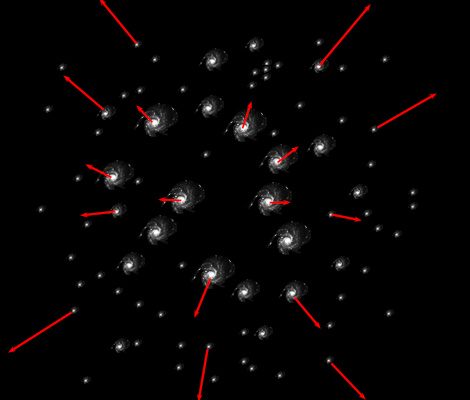
but that this expansion is accelerating!
What does an accelerated expansion physically mean?
If all you had in the Universe was some initial expansion and the mutual gravitational attraction of everything in it, you'd expect that as an object got farther and farther away from you, over time, its apparent motion away from you would slow down.
If there was enough matter, you'd expect that the expansion would eventually lose out to gravity, and that the objects moving away from you today would someday reverse course and wind up moving towards you.
If there weren't enough, the expansion would win out, and that the objects moving away from you today would slow down some, but would keep on moving away from you for all eternity.
But if the expansion is accelerating, there's something more to it.
Unlike the three decelerating cases above (with Ω > 0, where the recession speed of any particular galaxy slows down over time), or even the case of an empty Universe (with Ω = 0, where the recession speed of a galaxy remains constant), a Universe with an accelerated expansion will actually have a particular galaxy recede away from you faster and faster as time goes on!
(For some more details, check out Sean Carroll's dark energy FAQ.)
Until the 1990s, it was pretty much assumed that the Universe would be decelerating, and it was thought that in order to understand both the history and fate of the Universe, there would be two important measurements we'd have to make.
The first would be Ho, the Hubble parameter today. If a galaxy is a certain distance away from us, we expect to find it moving away from us at a certain rate, where the apparent recessional speed is given, very simply, by Hubble's Law. For relatively nearby objects (i.e., galaxies "only" about a billion light-years or less away from us), accelerating, decelerating and empty Universes all look the same.
But the second important measurement (known as qo, which is traditionally called the deceleration parameter) tells us whether the Universe is accelerating or decelerating, and it is very sensitive to the motions of faraway objects! In the figure above, the lowest line has a deceleration parameter of qo = +½, the middle line has qo ≈ +0.1, and the top line -- the best fit to the cosmological data from our actual Universe -- has qo ≈ -0.6. (I don't normally like to talk numbers, but these are going to be important later, so remember it; the best fit to our Universe's data has a deceleration parameter of qo ≈ -0.6.)
That negative value tells that the Universe is not decelerating at all, but is in fact accelerating in its expansion! And we learned this, of course, from looking at those very bright, well-known objects that are so visible at such large distances: supernovae!
There have been attempts in the past to explain these observations with something other than an accelerated expansion, and I've written many articles detailing how they fail.
But recently, there's been a new idea out there getting some press; that something called dark flow could be mimicking an accelerated expansion!
Cosmologist Christos Tsagas has written a paper (that's actually a follow-up to an earlier one) that notes something very clever.
You see, Hubble's Law -- the nearby relationship between an object's apparent recessional speed and its distance -- is true on average, but it is not a good predictor of any individual object's speed.
You see, in addition to getting swept up in the expansion of the Universe, every object is subject to local gravitational forces, that gives it an extra motion on top of the Hubble expansion, known as a peculiar velocity. It should come as no surprise that not only do we observe this, but simulations predict it as well!
In fact, it's well-measured that, relative to the uniform temperature surface of the cosmic microwave background, our galaxy has a substantial peculiar velocity of about 627 km/s, which is actually huge: about 1.4 million miles per hour!
Now, this dipole is not exactly indicative of our peculiar velocity. They ought to be related, of course, but because the Earth orbits the Sun, the Sun is orbiting the galaxy, and our galaxy is constantly being tugged on by all the others in the Universe, this peculiar motion will actually change somewhat over time!
We have, in fact, mapped out the peculiar velocities of a great many objects in our neighborhood. What we've found is that not only do many of these objects cluster together in small groups which move together, but that there is an unexpectedly large overall dark flow on scales hundreds of million of light years in size!
Now, here's where Tsagas' idea comes in, and it's very clever. He finds that if you're moving relative to the CMB rest frame, this relative motion will cause your local region of space to have a different expansion rate from the overall Universe!
This should have the largest effect in the nearby Universe, because as you move to larger and larger scales, your peculiar velocity, even if it's thousands of km/s, will eventually become negligibly small compared to the overall Hubble expansion.
Now remember, far above, we said that the best fit of our models to the data show that the deceleration parameter, qo ≈ -0.6, although at very much earlier times -- when dark energy was unimportant -- the Universe was, in fact, dominated by matter, and decelerating with an approximate deceleration parameter of qo ≈ +½.
Now, the big question, of course, is whether Tsagas' model can explain the same cosmological data in the supernovae that dark energy does. And to Tsagas' great credit, he is honest about what his results give, and how they compare to our concordance cosmology.
The answer is no. His model can give apparent deceleration parameters as negative as about qo ≈ -0.3, but no more than that. And that deceleration parameter goes approximately towards zero very quickly, and becomes small and positive (but much less than the qo ≈ +½ predicted by the standard Lambda-CDM model) by z = 0.3 at the latest. Now, I worried that this would become very problematic at the intermediate redshifts, where the support for the dark energy model is strongest.
So, I took the best available supernova data, along with the fits for models such as the dark energy model, an empty Universe, and a few others (from Ned Wright's site), and I put in a line to try to fit my best calculations for Tsagas' model.
Now, I do give Tsagas' model a ton of credit for being able to produce a significant (if not quite sufficient) early rise in that curve, because it does so without invoking any dark energy or negative-pressure fields! But the low-density nature of Tsagas' toy Universe winds up producing predictions that are too close to the "empty Universe" model that are inconsistent with the intermediate-redshift supernovae.
So it's a neat little toy, and it's very impressive that it produces any sort of positive acceleration, but it doesn't look like it can replace dark energy. Still, it's always worth exploring alternatives, and every time I do, I find myself a little more convinced of how impressively dark energy actually works!

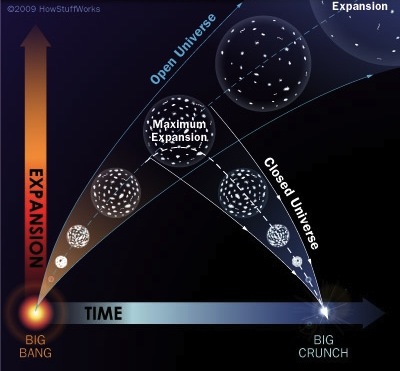


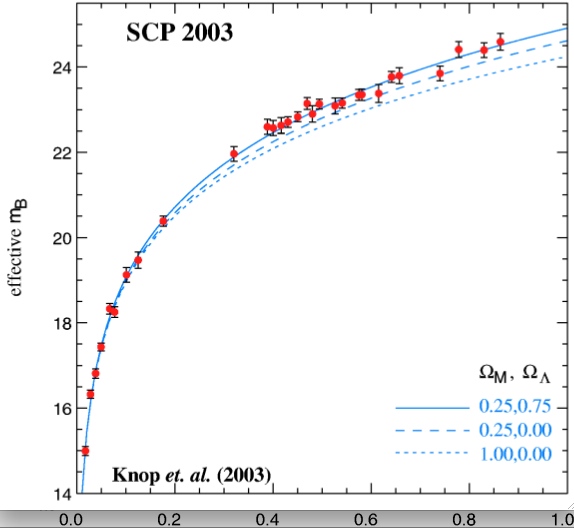
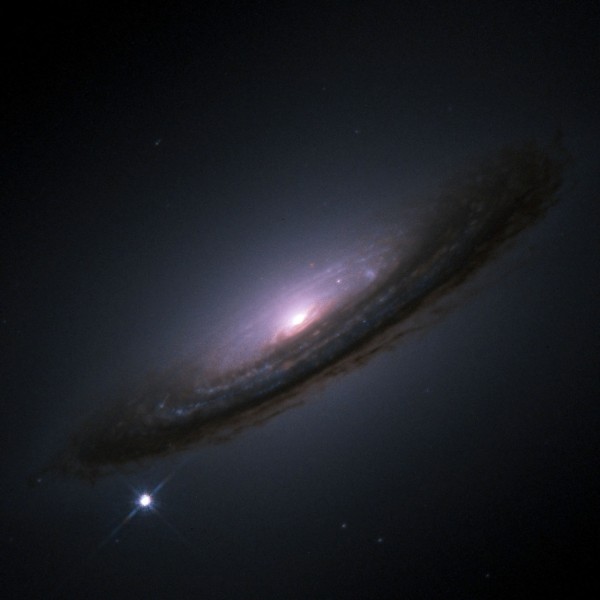
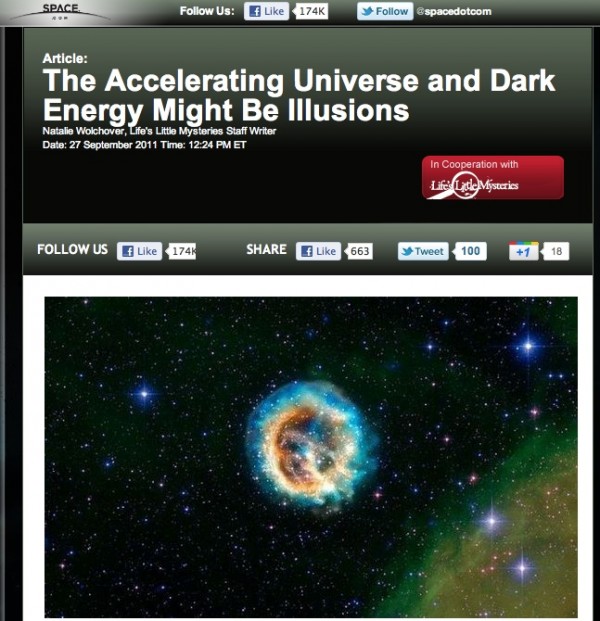
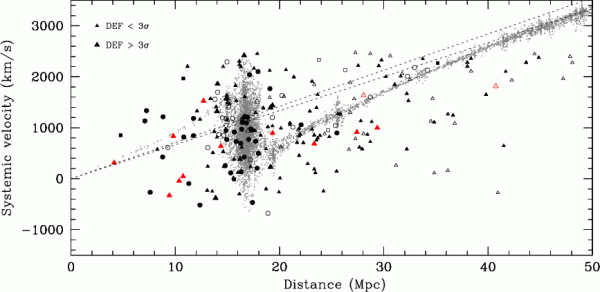
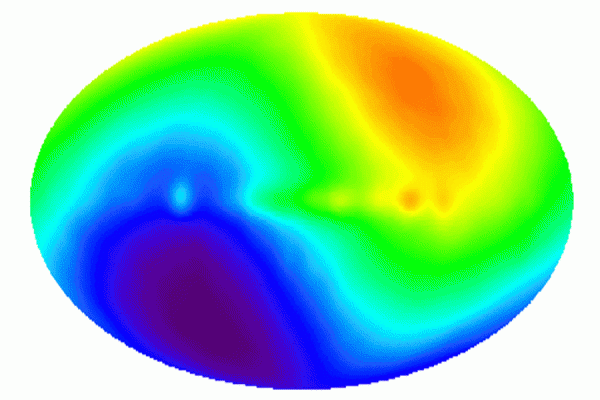
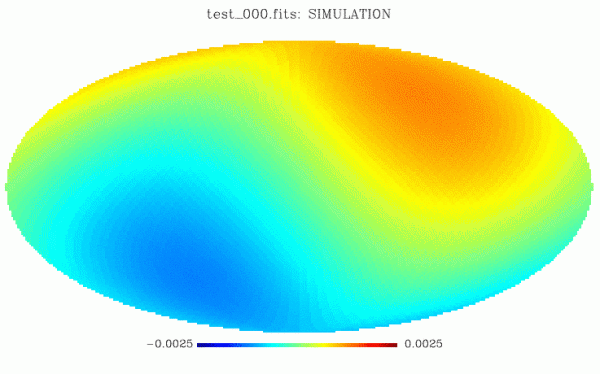
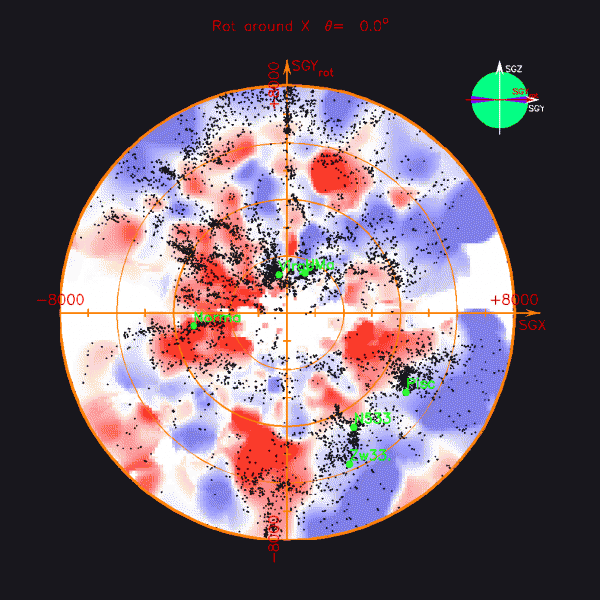
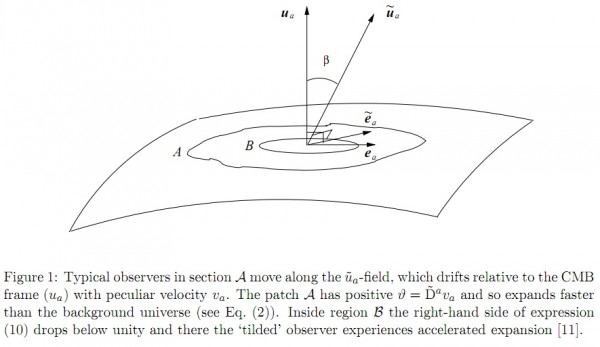

Ethan, what do you think about this new paper?
http://arxiv.org/abs/1109.4315
"Now, this dipole..."
Sorry, what dipole?
The dipole moment in the CMB induced by our motion relative to it; we see it blue-shifted and intensified (as though it were hotter) in the direction we're moving towards, and red-shifted and weakened (as though colder) in the direction we're moving away from; represented by the orange and purple regions in the plot.
Hey! Where's the slavish adherence to one's preferred model over all other's? Where's the unreasonable sniping over why another person's model is awful? Where's the wallpapering over the deficiencies of one's own theories and the highlighting of others? In short, why is everyone being so reasonable??!!
Oh yeah. This is how science is supposed to work--and how it does work a lot of the time, despite the suspicions of people outside. Thanks for another great post, Ethan!
Appreciate this freely given information. As the latter days of the last the greatest Caucasian Empire known to mankind folds gently on its economic dilemmas, as the final drops of Saudi oil are shipped, even after the last great V-8 engine comes off the American lines, and the final McMansion is foreclosed, in the 'Unemployables' lines, we can rest assured that even NASA was staring at the sky's, and American Scientists were there with them postulating, and publishing until Scientific papers from America served as firewood in the tent cities,shanty towns, and Mandarin became the new language of Science in the world, U.S. dollars replaced by Yuan, and American proven, Chinese Re-engineered Thorium fueled LFTR and CANDU reactors power the new Pan-Eurasian Empire in the East - a "Star" they missed! P.S. My arse is a star they haven't named yet, not even in fanciful Latin or Greek of the ivory towers regions, shame, isn't it.
@1 Bjoern
Nice link. Another alternative. OK. Sounds interesting to me; but I'm no expert.
My brain hurts.
Here's the frustration.
Yes dark energy works, i.e. explains the data, but not in terms of any known or new forces, particles or fields. What we've got is a nicely correlated set of observations of accelerations that we give the name "dark energy"; which just means "unknown energy", i.e. not correlated with any known energy. Now, I'm not disparaging observation or theory; this is the best that excellent scientists have done so far.
E.O. Wilson, the entomologist said something like, "Ecology is much more complex than physics."
Well maybe cosmology (and all of science) is getting "much more complex than physics."
"Quantum theory is unable to supply a unique definition of chemical bonds that accords with the intuition of chemists whose daily business is to make and break them... According to quantum chemist Dominik Marx.. all such descriptions "are useful in some cases but fail in others."" Sci Amer Oct 2011 pg 49. "Once a (chemical) reaction to be simulated invovles more than a few dozen electrons... the calculations... overwhelm even the most powerful supercomputer." (Of course this is an astonishing achievement; but we can't scale to simulate complicated biomolecules).
And then we have the recent case of the faster than light neutrino. No aha explanation yet.
So yes my brain hurts, (though maybe not like the scientists working the field).
Maybe correlation without an adequate explanation is the best science can achieve. Ouch, that hurts. But as dark energy stands; it is emergent; i.e. it stand apart from known energies.
Maybe reductionism is just an approach (a useful approach); but fundamentally an illusion. There does seem to be an accellerating proliferation (i.e. a "dark proliferation") of scientific subspecialties whose insights, laws and such are irreducible in the detail to one another. Oh well, just some thoughts.
Before we figured out what proteins were, they were often referred to as a "factor" in some fraction of a purification column. We can see its effects, but can't say much about it otherwise at the moment.
Despite reading alot in this field, (as a kind of avocation), I'm basically a layman, so forgive me if my input is either knuckleheaded or obtuse.
In a series of lectures, Sean Carroll demonstrated how two thin sheets of nonconductive metal, suspended in a void, would draw together over time. Not from gravity, but from the negative pressure of Dark Energy.
That being the case, (not to mention the more abstruse arguments presented by the blogger, above) it seems to me that the Dark Flow hypothesis is going to have to come up with something better than frame reference, (velocity in context of a larger set?), to make sense.
Which means we're already having to dig around for special circumstances to explain away observable phenomenon, in order to "save" Dark Flow.
That being said, speaking as a complete outsider to the discussion, I can posit one circumstance that would "bring back" Dark Flow as a possibility -- and that is entangled Dark Matter, which could exert gravitational pull not only on large regions such as the Local Universe, but also (having access to other dimensions/Cosmoses) contravene relativistic boundaries.
However, the simplest solution being the best, to me Dark Energy still seems the likeliest explanation for these phenomena, and should suffice.
Until the Big Rip turns negative fire into negative ice.
Perhaps, like ancient "flat earthers" we are, erroneously, thinking in terms of "flat" universes--we cannot yet be certain what the universe is doing because we do not know its shape, size, etc. Just perhaps, as we have cells w/i our own bodies, we are cells in another body too large for us to even imagine, and that body merely cells in another body. Boggles the mind to even consider it.
So dark flow does not successfully mimic dark matter.Are we to hold, pro tem, that dark energy, demonstrated but unexplained, is distinct from dark flow, measured but unexplained and that both are distinct from dark matter, necessary but unexplained? Has something changed?
Is not dark flow, posited as indicating pre-inflationary exo-structures, still a real threat to singularity-type big bang options?
Given that "this expansion is accelerating" does not imply that the constant Îof expansion (in units of acceleration/distance, equivalent to a reverse matter density -Ï) is itself changing, is there any clue to whether the coefficient is changing? Also, since the dimensions of Îare 1/T², that provides a quantity of derived time, it would be interesting to compare to current age of universe (~13.7 BY.)
Let's see what I've got for the commenters here:
Bjoern @1, the article you link to looks like it will eventually morph into a graduate student's PhD thesis. The work is much more interesting from a relativity point-of-view than it is from a physical cosmology point-of-view, however, as it is forced to consider a number of assumptions that clash with observables.
Collin/Andrew @2/3, I perhaps didn't do a good job of explaining: that dipole is representative of the temperature anisotropy in the cosmic microwave background due to the doppler shift of our motion relative to the CMB rest frame. The figure of 627 km/s as our velocity relative to it is derived from this observation.
AJKamper @4, of course Tsagas minimizes the shortcomings of his model and does downplay the conflicts with our observations, but he does not exaggerate a claim that, for example, this could work on all scales to replace dark energy. (It does not.) The graph I generated is just one version of his model; it is possible to generate others on the last diagram I have shown. For example, you could have one with a slightly larger initial rise, but it would turn over to slope downwards more quickly and more severely. Or you could have one with a shallower initial rise that perhaps did not turn over until z~0.3 or so, but it would have a shallower fall as well. In none of these cases would you be able to match the supernova data.
Jack @8, what you are talking about with the two metal plates is the Casimir Effect, which is due to an electromagnetic effect of the quantum vacuum. It is unclear whether this is related to dark energy or not, and although we have good reasons speculate that it is, we have the Casimir Effect whether we have dark energy or not in our Universe.
The Big Rip is a fun scenario to play with, but as better and better observations come in, we are finding that dark energy looks like a cosmological constant, not a cosmological increasing-with-time-future-catastrophe that would result in a Big Rip.
L Dodd @9, if the Universe is anything other than flat, it is at least 150 times larger than the observable patch we see. Considering that the patch we can see is 93 billion light years in diameter, and based on what we know of even the simplest models of cosmic inflation, we have no problems calling it -- to the best of our knowledge -- flat.
moggsy @10, dark flow does not successfully mimic dark energy; it made no attempts to address dark matter. Dark energy explains the observed accelerated expansion rate of the Universe, dark flow is the alternative explanation addressed here shown to be insufficient, dark matter is something else entirely that I blog about at least once a month here.
Neil @11, what do you mean by coefficient? If you want to do a fun thing involving expansion and time, though, I have an exercise for you. Take your favorite value for Ho, the Hubble constant today. (For example, 71 km/s/Mpc.) Convert either kilometers into Mpc or vice versa, and cancel those distance units out to get units of inverse seconds. Now, take 1/Ho to get units of time, and see what sort of time you get out. (Hint: it feels like magic, if you've done it correctly!)
Thanks for getting back to us about our comments, Ethan. For my part, it's good to know that the Big Rip is NOT NECESSARILY going to be spoiling things fifty or so billion years from now, by converting everything into a boiling stew of quarks --
I always enjoy Ethan's commets about the universe and physic, he is so smart and explain things that we, ordinary people can understand. This comment from some catholic Juan Pablo Polit, surprised me because I did not expect to be so retrograded people still exist.
"Si la Serie sobre el Vaticano es hecha por National Geografic o Discovery Chanel no valen la pena. Estos canales pertenecen a la MasonerÃa y son enemigos declarados de la Iglesia Católica."
This is my translation:
If the article are coming from National Geographic or Discovery Chanel are worthless because they are Masonics and they are well known enemies of the Catholic Church.
Very nice blog, I've just found it from "cat dynamics". Did you happen to get the "closed dark energy" and "flat dark energy" legends backwards in your plot above? For z > 0.7 or so, it sure looks to my Mark 1 calibrated eyeball (for what that's worth) that the dashed line is the better fit, even given the large error bars at high z.
No, coolstar, that's right. But everyone admits that our current instruments are insufficient for telling which of those two models are a better fit; it will take a future mission, either JWST, WFIRST, or the European Space Agency's Wide-Field Imager (which will likely get there the fastest) to collect enough supernova data at z > 1 to tell.
Our measurements of large-scale structure and the CMB, not included on the above plot, give much more stringent constraints on curvature than supernova data does; the supernova data is much more sensitive to the equation of state of dark energy, and hence is the best source of our knowledge that dark energy is so well-fit by a cosmological constant.
@14. "la Serie sobre el Vaticano" = "the Series about the Vatican"
What does that have to do with physics?
If you postulate that nature does not do anything just once then there are other universes. What if these universes interact with our universe with a force even more universal than gravity- this could be the source of dark energy- a force from other nearby universes outside the expansion envelope of our universe. In the multiverse hypothesis it is assumed that there would be no interaction between universes, while this is convenient I don't see why it should be true.
The universe is not expanding what you are seeing IS the G.A.M.[galactic apture movement ].Every galaxy moves ours moves 300,000 linear notical FT per yr,the driver of these galaxys are the black holes,congluency 84 billion p.si it sure looks like we are expanding but we are not and can be proven in apture involments.The congluency in space from our vantage point is 12,880 p.si,and delyneated from center,RUN THIS ALGO 7481.3 OVER 1281.2 OVER AND 1341.897 CONGLUENENT YEILDING IN VESCUE.ZEN M.L.D.
The piece was inspired by the BBC documentary, Is everything we know about the universe wrong?
Does our Universe have a discernable trajectory before the Big Bang and will our expanding Universe eventually feed the creation of other Universes? Dark flow allows for the hypothetical mapping out of the former and the latter and is the basis for the rationale in forming the following proposition.
Investigation further afield than the Dark flow pull beyond The Great Attractor (Wiki, Dark flow) in the direction of the Centaurus and Hydra constellations is needed to gather vital information. If it is eventually possible to prove that light is gravitationally bending towards the latter point of reference, then we are inferring evidence for a new type of Black Hole. This new type of Black Hole would be super super massive (SSM black holes) in that it could have the potential of absorbing whole galaxies and they could also produce high energy jets similar to quasars.
Dark flow pull beyond The Great Attractor travels at a tangent to our Universe but we could equally say that our Universe is at a tangent to that dark flow. Therefore our Universe from this perspective is a dark flow being created by some other gravitational attraction. Gravitation, or gravity, is a natural phenomenon by which physical bodies attract with a force proportional to their mass.(Wiki, Gravitation). In order for there to be dark flow in either direction there must be, at the attracting end of it, a physical body with enough mass to do so such as the hypothetical SSM. Quasars can create jets of high energy that travel near the speed of light (Wiki, Quasars). If dark flow indicates galactic gravitational attraction by a SSM then could these also produce high energy jets but on a larger scale parallel to the increased size of a SSM?
Visualise high energy jets powered by accretion of material into SSMs and these propelled outwards at nearly the speed of light into an area of space with little density. The outcome would neatly fit the properties from after the Planck Epoch (Wiki, Big Bang) onwards. Therefore the Big Bang is possibly not a description of an event that suddenly started out of nothing but rather the incorporated continuation of a sequence of events before and after. Having at least the evidence for two SSMs, beyond the Great Attractor and our Universe, indicates that any coalescing jets forming a universe from a SSM would inevitably be caught up in the gravitational pull of another SSM accelerating its expansion. That all jets from the galactic accretions of SSMs occur is in itself an explanation of low density expanses in a universe. Matter and energy had been gravitationally attracted into higher densities leaving vacant other areas that can be filled in by SSM high energy jets. Whether high energy jets travelling from an SSM could reach an area of high density beckons further investigation. Each SSM is the focal point of a universe in itself, there being more than one according to the evidence from dark flow.
For a universe to be able to perceive itself chemical elements need to form to create life. From the point of view of life such as our species a universe is a chemical element making mechanism.
Interesting, but what you appear to be leading up to is simply the Big Bang under another guise, that of a high energy jet powered by accretion of material into an SSM.
Keep in mind that the very concept of a "Big Bang" was a derogatory term coined by the late Fred Hoyle, to promote his own Steady State Theory. Once visualized as the "explosion of a cosmic egg," the Big Bang as such has been largely superceded as a concept by the idea of inflation from an infinitely small singularity. Whether inflation occurred from nothing, or something else, it did come from such a point, or from something behaving like that point, and it's hard to see how that much-verified concept could be overriden by an extension of Dark Flow. (A black hole can be pointlike, but in fact takes up space -- the larger, the more space).
That said, the theoretical possibilities raised by your post are interesting, and should be dealt with more substantially as cosmological exploration continues.
Check the theory of the "edge singularity" at eli-astro.tumblr.com
That to me is the best explanation for dark energy.